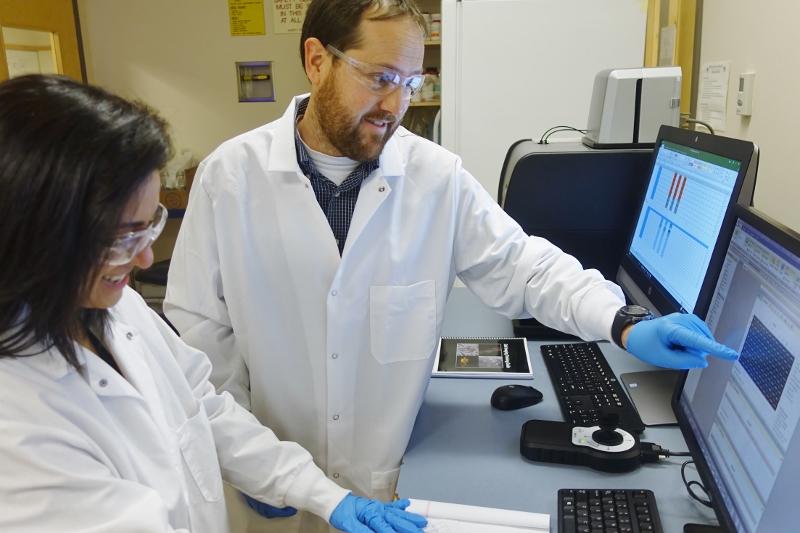
Double your biotech R&D budget
Costs are rising for research so how do you maximize your biotech R&D budget? Form an academic-industrial partnership. Perhaps you are working on a disruptive technology and need an expert to assess that your assay is better than the accepted standard? Or maybe you’ve had a pet research project sitting on the back burner that your company doesn’t have the resources (e.g. time, money or expertise) to dive into? Now is the perfect time to build that bridge to the ivory tower and create a successful academic-industrial partnership.
Universities and colleges have a lot resources at their disposal which most companies cannot easily gain access to without entering into expensive fee-for-service or consulting agreements. However, by forming an academic-industrial partnership, you also open the door to getting a solution to your technical problem as well as many other benefits.
Not only will you benefit from your academic partner’s specialized knowledge and expertise, but also that of their entire research team (e.g. postdoctoral fellows, graduate students, undergraduate students and technicians). You gain access to their research facilities (e.g. well-equipped laboratories and clean rooms) and their cutting-edge equipment (e.g. laser-scanning confocal microscopes, mass spectrometers and more).
Working on a collaborative project will help to enhance your company’s in-house skills and knowledge. Plus, having motivated students involved on your project creates the perfect opportunity to train and recruit future employees to your company. Each academic-industrial partnership builds your network of academic experts and makes links to other companies who have previously worked with those researchers.
Perhaps you think it would just be easier to hire the academic as a consultant. Academic-industrial partnerships have another benefit– they stretch your R&D dollars. Academics can apply for grants that leverage your company’s cash and in-kind contributions (e.g. staff time spent on project, materials/equipment donated or lent to the researcher) which act as a multiplier to increase the overall value of the project.
Another benefit is that your industrial contributions may be optimized through tax credits. Providing that your company’s project is eligible – has technological uncertainty, attempts at technological advancement and has a systematic approach – you may be able to apply for both provincial/state and federal tax credits. Up to 80% of a cash contribution to academic institutions is eligible!
Sold on the benefits of an academic-industrial partnership? Want to find a research partner? Universities and colleges have academic-industrial match-makers on staff called industrial liaison officers. Their job is to know the experts at their respective institutions. These knowledgeable folks can help broker a partnership on your behalf. Or you could attend an institutional open-house that showcases their experts and resources, and uses a speed-dating approach to meet many potential research partners.
5 tips to a successful academic-industrial partnership
Have a research partner? Ready to start planning your collaborative project? Here are five tips to having a successful academic-industrial partnership:
- Communicate Openly and Often
Communicate frequently with your academic partner, whether by in-person meetings, phone calls or via email. Have initial discussions to plan out the project, weekly check-ins to see how the project is progressing and a summary meeting at the project’s conclusion to transfer results and plan for next steps. Frequent conversations keep both parties in the loop and prevent nasty surprises.
- Set Realistic Expectations
Plan out key milestones and objectives with your academic partner for your collaborative project. Establish who is going to act as the project manager to keep things on schedule. Be aware that research is filled with uncertainties and risks, and that a negative result is not necessarily a bad thing.
- Understand Timelines
Understand how corporate culture is different from the academic life is key to having a smooth partnership. Academic institutions have built in timelines such as exam periods and thesis defenses which can disrupt the students’ and professors’ teaching/research schedules. Be prepared for some adjustments to the work plan.
- Establish IP Ownership
Decide who owns the intellectual property (IP) that is generated during the project. This is essential. Your academic partner may have background IP that is crucial to advancing your technology forward, so be aware if licensing is required. IP agreements take time and if you are applying for grants as well, it’s best to do both of these things in parallel to not waste time.
- Plan for the Future
Design a roadmap with your academic partner for where the research needs to go. Find an unexpected result? Need more experts? Additional grants available for funding? Discussing next steps with your academic partner will help you to build a long-term academic-industrial partnership and move your technology forwards to successful commercialization.
Adapting these strategies will help you to make the most of your biotech R&D budget and accelerate advances in your biotech research.
Alexandra (Sandy) Reid is a StarFish Medical Proposal Writer. She transforms a client’s idea into a plan that leads to the right solution to their problem. This is her first StarFish blog.
Images: StarFish Medical